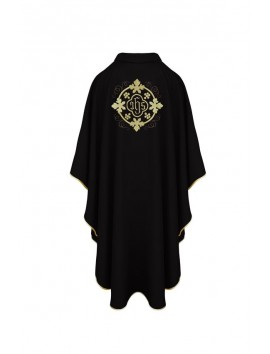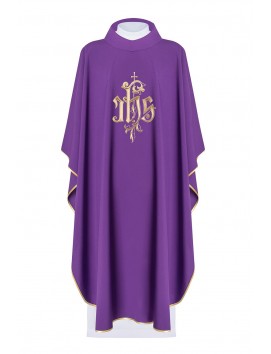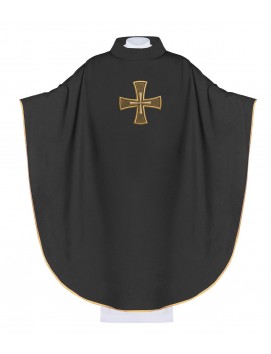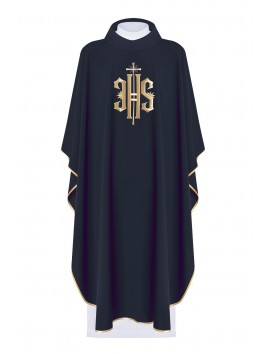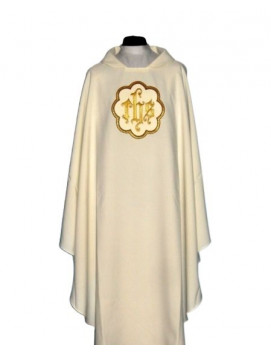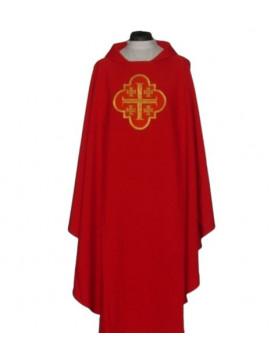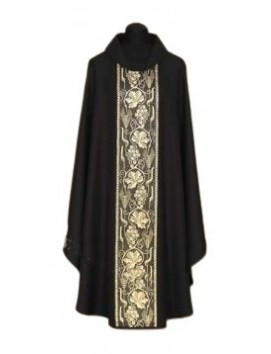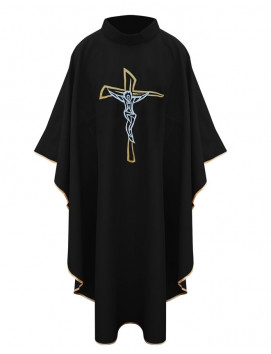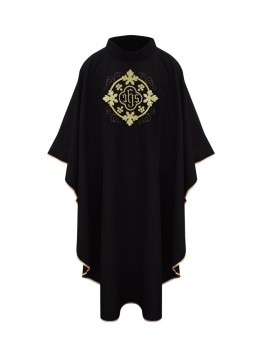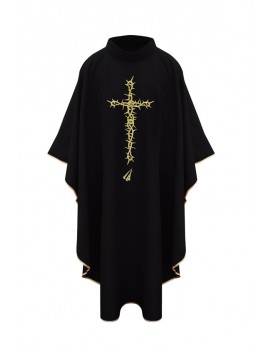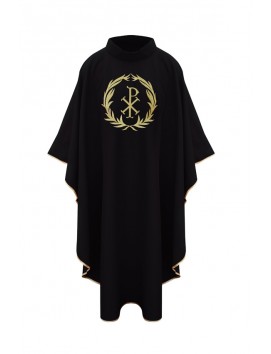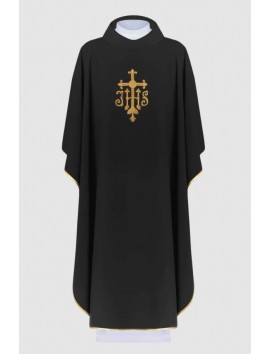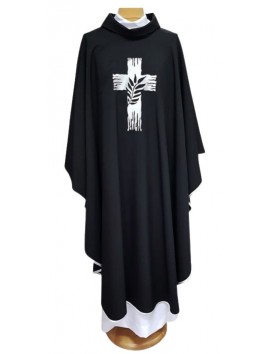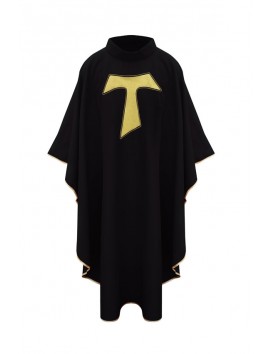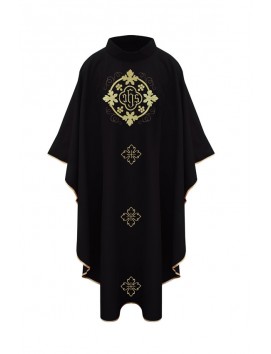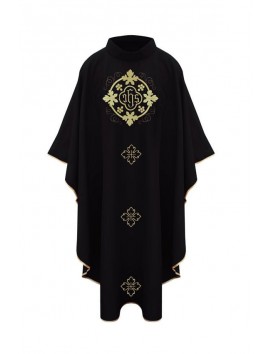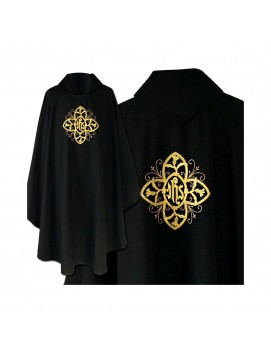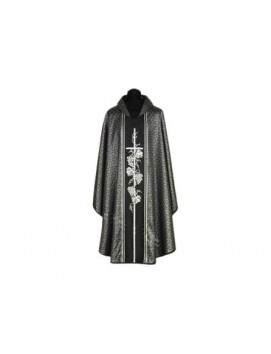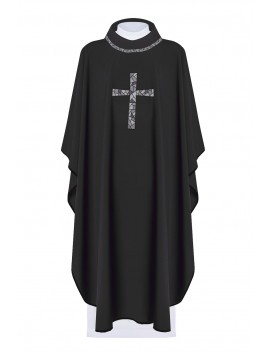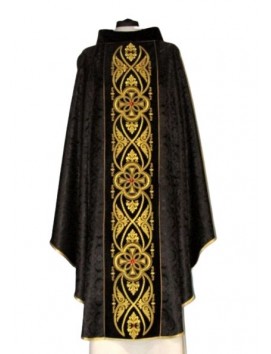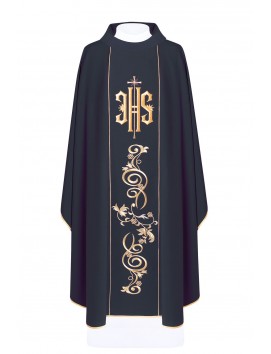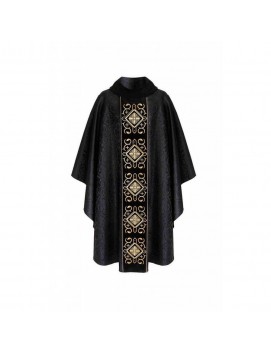No products
Black chasubles
Black chasubles are liturgical vestments worn by Catholic priests during funerals and Masses for the Dead. Black represents mourning, penance, and humility, and is intended to remind us of the reality of death and the need for prayer. Black chasubles are also a symbol of the work yet to be done, which is the work of prayer and the graces of the Mass. Black vestments are not commonly used in modern times, and purple is often used as a substitute. However, black chasubles can still be purchased from various online shops and are often made to order.
Black chasubles are liturgical vestments worn by Catholic priests during funerals and Masses for the Dead. Black represents mourning, penance, and humility, and is intended to remind us of the reality of death and the need for prayer. Black chasubles are also a symbol of the work yet to be done, which is the work of prayer and the graces of the Mass. Black vestments are not commonly used in modern times, and purple is often used as a substitute. However, black chasubles can still be purchased from various online shops and are often made to order.
-
Chasuble with cross - black Chasuble with cross - black
Chasuble with cross - black Chasuble with cross - black
$ 145
Understanding Black Chasubles: A Symbolic Garment in Liturgical Practices
Black chasubles are a distinctive type of liturgical vestment primarily used within the Roman Catholic Church, as well as in some Anglican and Lutheran churches. These garments hold deep symbolic meaning and are traditionally worn by priests during specific religious services, such as funerals and Masses for the dead, including All Souls' Day, in churches. The color black in chasubles is emblematic of mourning and the solemnity of funeral masses, reflecting the Christian community's collective grief and remembrance of the departed in churches.
The Historical and Cultural Significance of Black Chasubles
The use of black chasubles dates back centuries and is steeped in rich tradition. Historically, black as a liturgical color has been associated with mourning, penance, and the need for prayers for the souls in purgatory. This tradition is rooted in the belief that while Christians are a people of hope, they are also acutely aware of the reality of sin, judgment, and the need for intercession on behalf of those who have passed away.
Culturally, black vestments at funerals serve as a stark contrast to the common cultural expressions of death, which often emphasize celebration over mourning. The use of black in liturgical settings speaks a universal language of loss and the need for prayer, bridging the gap between faith and cultural practices.
The Role of Black Chasubles in Modern Liturgy
In contemporary liturgical practice, there has been a resurgence in the use of black chasubles, particularly among younger clergy and those with a more traditionalist approach to worship. This revival is seen as a way to reconnect with the historical roots of the faith and to provide a visual catechesis on the importance of praying for the dead.
Despite the availability of other colors like white and purple for funerals and memorial services, black remains a powerful symbol that emphasizes the Christian understanding of death, liturgical celebrations, and the afterlife. It serves as a reminder to the faithful of the need for prayers for the souls of the departed and the reality of purgatory.
The Design and Styles of Black Chasubles
Black chasubles come in various styles, each with its own unique characteristics and history. The Roman chasuble, with its full, flowing shape and ornate decoration, is the most traditional style. Gothic chasubles are more fitted and often feature simpler, geometric patterns. Monastic chasubles are typically plain and unadorned, reflecting the austerity of religious orders.
The ornamentation on black chasubles can range from simple to elaborate, with embroidery and other decorative elements that often include Christian symbols such as the cross. These designs not only enhance the beauty of the vestment but also serve to convey theological truths and the solemnity of the liturgical occasion.
FAQs About Black Chasubles
Why are black chasubles worn?
Black chasubles are worn as a symbol of mourning and prayer for the dead. They are typically used during funerals, memorial services, and Masses for the dead, such as on All Souls' Day.
Are black chasubles still used today?
Yes, black chasubles are still in use today, especially in parishes with a more traditional liturgical practice. There has been a noticeable resurgence in their use among younger clergy and those who wish to maintain a connection with the historical and symbolic aspects of the faith.
Can other colors be used instead of black for funerals?
Yes, the Church allows for white and purple to be used for funerals and memorial services. White symbolizes the resurrection and hope, while purple signifies penance and mourning. However, black is uniquely associated with mourning for the dead and is a traditional color for these occasions.
What is the difference between a Roman and a Gothic chasuble?
The Roman chasuble is characterized by its full, flowing shape and rich ornamentation, while the Gothic chasuble is more fitted and features simpler, geometric patterns. The choice between the two often depends on the liturgical preferences of the parish or the celebrant.
In conclusion, black chasubles serve as a poignant reminder of the Church's teachings on death, mourning, and the afterlife. Their use in liturgical services is a testament to the enduring power of tradition and the importance of visual symbols in the expression of faith.

